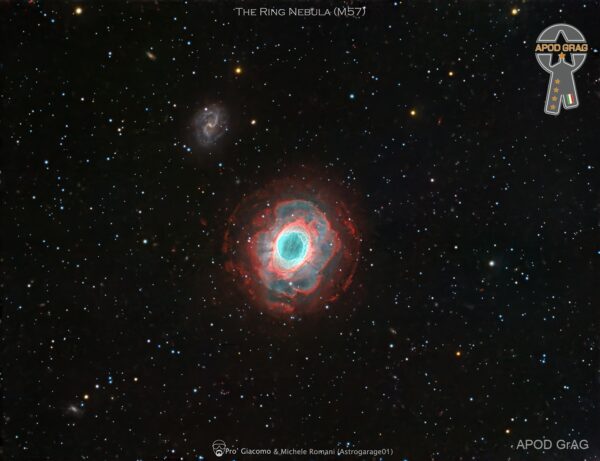Celestial Antiquity M57
The Ring Nebula (also catalogued as Messier 57, M57 and NGC 6720) is a planetary nebula in the northern constellation of Lyra. Such a nebula is formed when a star, during the last stages of its evolution before becoming a white dwarf, expels a vast luminous envelope of ionized gas into the surrounding interstellar space.
M57 is 0.787 kpc (2,570 light-years) from Earth. It has a visual magnitude of 8.8 and a dimmer photographic magnitude, of 9.7. Photographs taken over a period of 50 years[14]show the rate of nebula expansion is roughly 1 arcsecond per century, which corresponds to spectroscopic observations as 20–30 km/s. M57 is illuminated by a central white dwarf of 15.75v visual magnitude.
All the interior parts of this nebula have a blue-green tinge that is caused by the doubly ionized oxygen emission lines at 495.7 and 500.7 nm. These observed so-called “forbidden lines” occur only in conditions of very low density containing a few atoms per cubic centimeter. In the outer region of the ring, part of the reddish hue is caused by hydrogen emission at 656.3 nm, forming part of the Balmer series of lines. Forbidden lines of ionized nitrogen or N IIcontribute to the reddishness at 654.8 and 658.3 nm.
